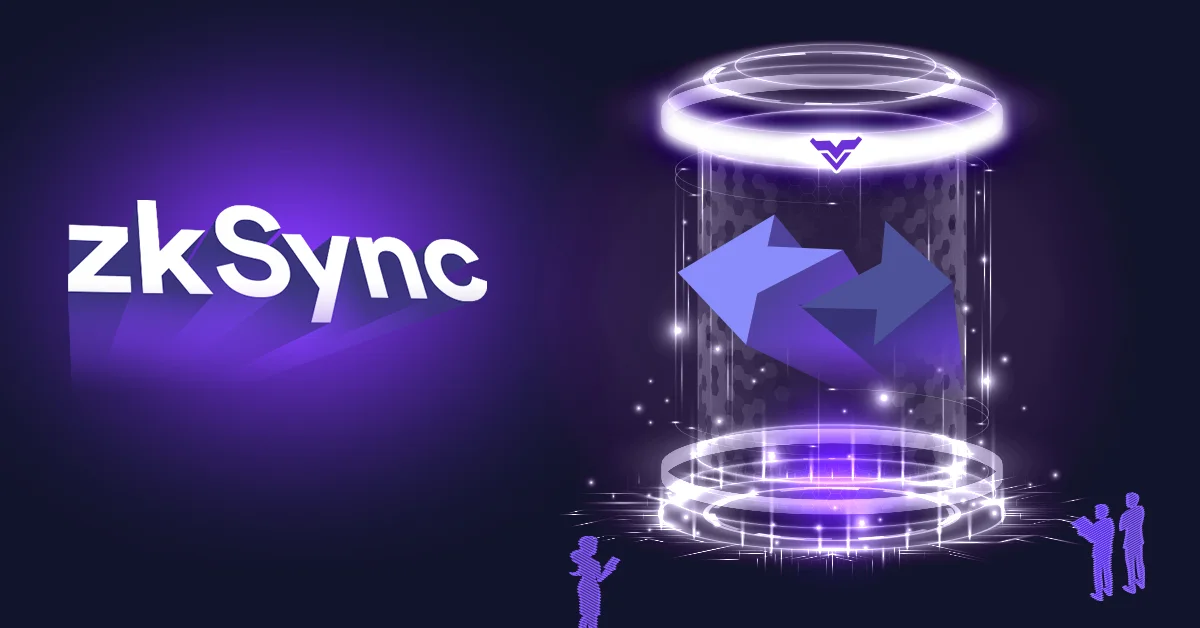On April 15, 2025, ZKsync, a leading Ethereum Layer-2 scaling solution, disclosed a significant security breach involving an admin wallet, resulting in the theft of 66 million ZK tokens worth roughly $5 million. The incident led to a 15% drop in the ZK token price, raising alarms about DeFi security and centralized vulnerabilities in decentralized ecosystems. This article examines the hack’s details, its effects on the cryptocurrency market, and the implications for ZKsync and its investors.
The Hack Unveiled

The attack hit an admin wallet linked to ZKsync’s June 2024 airdrop. Hackers minted 110 million unauthorized ZK tokens. They sold 66 million of those tokens. ZKsync shared a statement on X to clarify the incident. The team explained the breach only affected unclaimed airdrop tokens. It did not touch user funds, the ZKsync protocol, or token contracts. The team reassured the community about the system’s integrity. They confirmed that the core infrastructure stayed secure. User assets were not compromised. They described the event as isolated. It only impacted the airdrop reserves.
Security experts, as discussed in online forums, point to a compromised admin key as the likely cause, highlighting weaknesses in ZKsync’s administrative safeguards. The hackers quickly liquidated the stolen tokens, driving the ZK token price from $0.0496 to $0.0395 within hours. This breach ranks among 2025’s notable DeFi incidents, underscoring persistent challenges in protecting critical access points in blockchain systems.
Impact on ZKsync and the Market
ZKsync, powered by zk-Rollup technology to enhance Ethereum’s scalability, has come under scrutiny post-hack. Developed by Matter Labs, the project previously faced backlash for its airdrop, criticized for allegedly prioritizing insiders, which strained community trust. This incident amplifies those concerns, with online discussions emphasizing the dangers of centralized admin accounts in systems designed to be decentralized. Some fear the hack could discourage new users from exploring ZKsync’s ecosystem, including platforms like Increment Finance and Mute.
The ZK token’s 15% price decline signals immediate market unease, though major cryptocurrencies like Bitcoin, steady at $83,500, and other altcoins held firm. ZKsync’s total value locked (TVL), reported at $58.63 million by DefiLlama, may face further strain if investor confidence falters. The token, now at $0.041, has shed nearly 90% of its value since its June 2024 launch at $0.295, reflecting a tough period for the project.
The $2.5 trillion crypto market continues to wrestle with security woes, with 2025 recording over $500 million in DeFi losses. This hack reinforces the urgent need for stronger protections, especially for initiatives like ZKsync, which seek to connect traditional finance with blockchain through scalable solutions.
Community Response and Sentiment
Online reactions on platforms like X reveal a blend of frustration and constructive critique. Some users slammed ZKsync for lax security, calling the admin key breach a textbook “single-point-of-failure.” Others supported the protocol, noting that user funds were unaffected and the hack was limited to airdrop reserves. Proposed fixes include adopting two-factor authentication (2FA) and conducting regular key audits to prevent future breaches.

ZK token price fluctuations of ZKsync captured at 09:40 PM on April 16, 2025, on CoinMarketCap.
Despite the setback, ZKsync remains a key player in the Layer-2 space. Its Elastic Chain vision and ZKsync 3.0 roadmap aim to integrate multiple chains, potentially regaining its competitive footing. Yet, the incident underscores the tension between innovation and security in DeFi, a balance ZKsync must navigate carefully.
Future Steps
ZKsync has committed to releasing a comprehensive technical report on April 15, 2025, to promote transparency. The team is collaborating with security specialists to probe the breach and bolster defenses, though recovering the stolen tokens is unlikely due to their spread across blockchains. While unconfirmed, potential recovery measures, such as compensating airdrop participants, could help restore trust.
For investors, the hack serves as a caution to focus on platforms with robust security and clear governance. ZKsync’s actions in the coming days will be pivotal as it strives to reassure users and hold its ground in the competitive Layer-2 market, facing rivals like Arbitrum and Optimism.
The incident also highlights broader DeFi challenges. As projects scale, securing administrative controls is critical. ZKsync’s response could shape its long-term adoption and the perception of zk-Rollup technologies in the industry.
Conclusion
The $5 million ZKsync admin wallet hack on April 15, 2025, and the resulting 15% ZK token price drop expose ongoing vulnerabilities in DeFi governance. While the protocol and user funds remain secure, the breach reveals risks tied to centralized admin systems. As ZKsync addresses this crisis, its transparency and security upgrades will determine its future in the $2.5 trillion crypto market, offering valuable lessons for investors and developers in the dynamic blockchain ecosystem.




